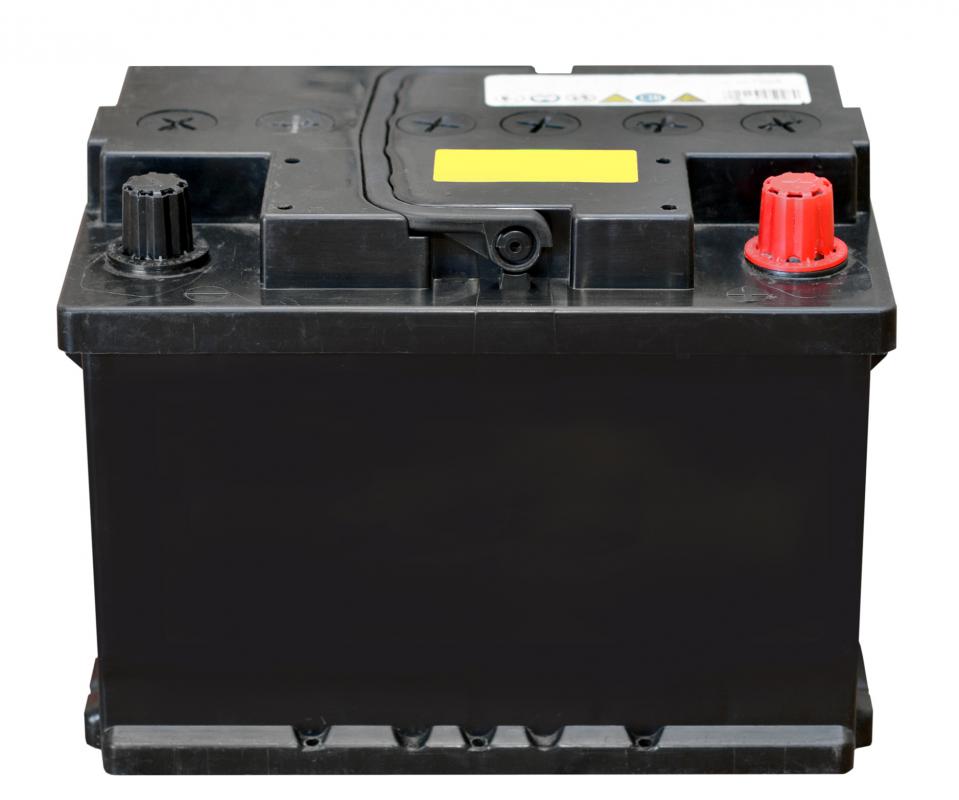At WiseGEEK, we're committed to delivering accurate, trustworthy information. Our expert-authored content is rigorously fact-checked and sourced from credible authorities. Discover how we uphold the highest standards in providing you with reliable knowledge.
What Is Aqueous Sulfuric Acid?
Aqueous sulfuric acid is any mixture of sulfuric acid and water, and is the most common way the acid is sold. The Latin word for water is aqua, which is where the term aqueous comes from. Sulfuric acid, or H2SO4, is widely used in chemical processing, for batteries, and as a dehydrating agent to remove water from other materials.
When sulfuric acid is mixed with water, the hydrogen atoms become ions, which means they separate from the acid molecule, develop a small electrical charge, and are available to react with other molecules. Since there are two hydrogen atoms in each molecule, sulfuric acid is called a dibasic acid. The ionization process requires water to be present, so most chemical processing uses aqueous sulfuric acid.

There is such an affinity, or strong attraction, of sulfuric acid for water, that strong acid can be used to dry other chemicals. This is known as dehydration, which comes from hydro, the Greek word for water. As the acid absorbs water, it becomes a weaker aqueous sulfuric acid solution, and eventually needs to be replaced with fresh acid or regenerated into strong acid. Adding sulfuric acid to water creates a great deal of heat, which needs to be controlled to prevent boiling the mixture.

There are two primary commercial ways for creating sulfuric acid, the lead chamber and contact processes. Invented in the 1700s, the lead chamber process uses a reaction of sulfur and potassium nitrate, or saltpeter, with steam in a lead-lined reactor to form sulfur trioxide. The sulfur trioxide can be dissolved in water to form aqueous sulfuric acid, typically with concentrations of about 70% acid.
In the 1830s, the contact process was invented to create acid that is more concentrated. This process uses a metal catalyst that expensive to produce, but can create acid concentrations up to 98%. This is called concentrated acid, and is generally the favored production method in the 20th and 21st centuries.
Aqueous sulfuric acid is a common raw material for the production of fertilizers, other chemical intermediates, and lead-acid vehicle batteries. Since the early 20th century, batteries made from lead plates suspended in a sulfuric acid solution were a common way to produce electricity for vehicles, ships, and aircraft. The lead reacts with the acid solution, forming molecular ions that create an electrical current.
As the battery creates power, the lead and acid react to form lead sulfate, which is a white powder that collects at the bottom of the battery. These batteries are rechargeable, which means that an electrical current sent through the battery will reverse this reaction and allow lead to re-deposit on the plates. As the charging proceeds, the sulfate ions will form sulfuric acid, which will create a more concentrated mixture in the battery and provide more electrical power when needed.
AS FEATURED ON:
AS FEATURED ON:












Discuss this Article
Post your comments